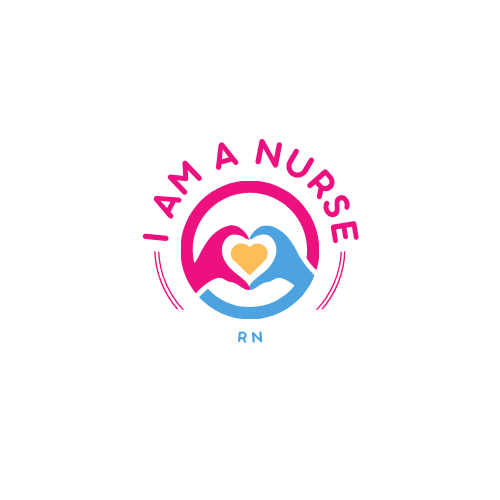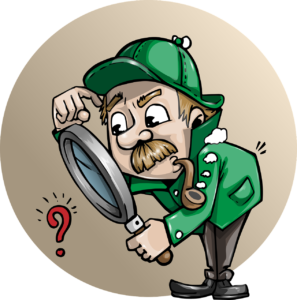
Image Source: FreeImages
Anxiety is a common experience that everyone encounters in response to stress. However, for some people, anxiety can become overwhelming and interfere with their daily lives. In this comprehensive guide, we will explore the different types of anxiety disorders, their symptoms, and effective coping strategies to manage anxiety.
What is Anxiety?
Anxiety is the body’s natural response to stress or a perceived threat. It is a feeling of fear or apprehension about future events or situations. While it is normal to feel anxious in certain situations, such as before a job interview or public speaking, excessive and persistent anxiety may indicate an anxiety disorder.
Anxiety disorders are mental health conditions characterized by intense and prolonged feelings of fear, worry, and apprehension. These disorders can significantly impact a person’s ability to function in their daily life. Let’s delve into the various types of anxiety disorders.
Types of Anxiety Disorders
- Generalized Anxiety Disorder (GAD): GAD is characterized by excessive and uncontrollable worry about everyday life events, such as work, family, and health. People with GAD often experience physical symptoms like restlessness, difficulty concentrating, and muscle tension.
- Panic Disorder: Panic disorder involves the occurrence of recurrent panic attacks, which are sudden episodes of intense fear accompanied by physical symptoms like rapid heart rate, chest pain, and shortness of breath. Panic attacks can be debilitating and may lead to a fear of future attacks.
- Phobias: Phobias are irrational and excessive fears of specific objects, situations, or activities. Common phobias include fear of heights (acrophobia), fear of spiders (arachnophobia), and fear of flying (aviophobia).
- Social Anxiety Disorder: Social anxiety disorder, also known as social phobia, is characterized by an intense fear of social situations and a fear of being judged or humiliated by others. People with social anxiety may avoid social interactions or endure them with great distress.
- Obsessive-Compulsive Disorder (OCD): OCD is characterized by intrusive and unwanted thoughts (obsessions) that lead to repetitive behaviors (compulsions) performed to alleviate anxiety. Common obsessions include fear of contamination, symmetry, and aggressive thoughts.
- Post-Traumatic Stress Disorder (PTSD): PTSD is a disorder that can develop after experiencing or witnessing a traumatic event. Individuals with PTSD may experience flashbacks, nightmares, and severe anxiety as a result of the traumatic event.
These are just a few examples of anxiety disorders, and it’s important to note that individuals can experience a combination of these disorders or have overlapping symptoms. Now, let’s explore the symptoms associated with anxiety disorders.
Symptoms of Anxiety Disorders
The symptoms of anxiety disorders can vary depending on the type of disorder and the individual. However, common symptoms may include:
- Excessive and uncontrollable worry
- Restlessness and irritability
- Difficulty concentrating
- Muscle tension and headaches
- Sleep disturbances
- Rapid heartbeat and shortness of breath
- Nausea and gastrointestinal issues
- Panic attacks
It’s crucial to remember that each person’s experience with anxiety may be unique, and not everyone will experience all of these symptoms. If you or someone you know is experiencing persistent anxiety symptoms that interfere with daily life, it may be indicative of an anxiety disorder. Seeking professional help is essential for an accurate diagnosis and appropriate treatment.
Causes and Risk Factors of Anxiety Disorders
The exact causes of anxiety disorders are not fully understood. However, several factors may contribute to their development, including:
- Genetics: A family history of anxiety disorders may increase the likelihood of developing an anxiety disorder. Certain genes and neurotransmitters may play a role in the development of anxiety disorders.
- Environmental Factors: Traumatic events, childhood adversity, and chronic stress can increase the risk of developing an anxiety disorder. Environmental factors can interact with genetic predispositions, leading to the onset of anxiety disorders.
- Brain Chemistry: Imbalances in neurotransmitters, such as serotonin and gamma-aminobutyric acid (GABA), can contribute to the development of anxiety disorders. These neurotransmitters are involved in regulating mood and anxiety levels.
- Personality Traits: Certain personality traits, such as being highly sensitive or having a tendency to worry, may increase the risk of developing an anxiety disorder.
- Medical Conditions: Some medical conditions, such as thyroid disorders, heart disease, and chronic pain, can co-occur with anxiety disorders, exacerbating symptoms.
- Substance Use: Substance abuse and addiction can worsen anxiety symptoms or trigger the onset of anxiety disorders. People may turn to substances as a way to cope with their anxiety, leading to a cycle of dependence.
While anyone can develop an anxiety disorder, certain factors may increase the risk. These include a family history of anxiety disorders, experiencing trauma or stressful life events, and having other mental health conditions like depression.
Diagnosing Anxiety Disorders
To diagnose an anxiety disorder, a healthcare professional will conduct a thorough assessment, which may include:
- Physical Examination: A physical examination helps rule out any underlying medical conditions that may be causing or contributing to anxiety symptoms.
- Psychological Evaluation: A mental health professional will assess the individual’s symptoms, medical history, and family history of mental health conditions. They may use questionnaires and interviews to gather information about the individual’s experiences and symptoms.
- Diagnostic Criteria: The Diagnostic and Statistical Manual of Mental Disorders (DSM-5) provides criteria for diagnosing different anxiety disorders. The healthcare professional will compare the individual’s symptoms to these criteria to make an accurate diagnosis.
It’s important to consult with a qualified healthcare professional for an accurate diagnosis and appropriate treatment plan tailored to the individual’s specific needs.
Treatment Options for Anxiety Disorders
The treatment of anxiety disorders typically involves a combination of approaches, including therapy, medication, and lifestyle changes. The goal of treatment is to reduce anxiety symptoms, improve daily functioning, and enhance overall well-being. Let’s explore the different treatment options available.
1. Psychotherapy/Counseling
Psychotherapy, also known as talk therapy, is a common treatment approach for anxiety disorders. Several types of therapy have been found to be effective, including:
- Cognitive Behavioral Therapy (CBT): CBT helps individuals identify and change negative thought patterns and behaviors that contribute to anxiety. It focuses on developing coping strategies and problem-solving skills.
- Exposure Therapy: This therapy involves gradually exposing individuals to the situations or objects that trigger their anxiety in a safe and controlled manner. Through repeated exposure, individuals learn to manage their anxiety and reduce fear.
- Acceptance and Commitment Therapy (ACT): ACT helps individuals accept their anxious thoughts and feelings while committing to actions aligned with their values. It aims to reduce the struggle with anxiety and increase psychological flexibility.
- Mindfulness-Based Therapies: Mindfulness practices, such as meditation and deep breathing exercises, can help individuals develop awareness of their anxious thoughts and emotions. These techniques promote relaxation and reduce anxiety symptoms.
2. Medication
Medication may be prescribed in conjunction with therapy to manage anxiety symptoms. Commonly prescribed medications for anxiety disorders include:
- Selective Serotonin Reuptake Inhibitors (SSRIs): SSRIs are a type of antidepressant medication that can help reduce anxiety symptoms by increasing serotonin levels in the brain.
- Benzodiazepines: These medications are used for short-term relief of severe anxiety symptoms. They work by enhancing the effects of a neurotransmitter called gamma-aminobutyric acid (GABA), which helps to reduce anxiety.
- Beta-Blockers: Beta-blockers are typically used to manage physical symptoms of anxiety, such as rapid heartbeat and trembling. They work by blocking the effects of adrenaline.
It’s important to work closely with a healthcare professional when taking medication for anxiety disorders. They will monitor the individual’s response to the medication and adjust the dosage if necessary.
3. Lifestyle Changes and Self-Care
In addition to therapy and medication, certain lifestyle changes and self-care practices can help manage anxiety. These include:
- Regular Exercise: Engaging in physical activity releases endorphins, which are natural mood boosters. Exercise can also help reduce stress and promote better sleep.
- Healthy Diet: A balanced diet rich in fruits, vegetables, whole grains, and lean proteins can support overall well-being and help manage anxiety symptoms.
- Stress Management Techniques: Practicing stress management techniques, such as deep breathing exercises, meditation, and yoga, can help reduce anxiety and promote relaxation.
- Adequate Sleep: Getting enough quality sleep is essential for mental health. Establishing a regular sleep routine and creating a relaxing sleep environment can improve sleep quality.
- Limiting Alcohol and Caffeine: Alcohol and caffeine can exacerbate anxiety symptoms. It’s advisable to limit or avoid these substances, especially if they worsen anxiety.
- Social Support: Building a strong support network of friends, family, or support groups can provide emotional support and a sense of belonging, reducing feelings of isolation.
- Time Management: Effective time management techniques, such as prioritizing tasks and setting realistic goals, can help alleviate stress and prevent feeling overwhelmed.
It’s important to note that not all strategies and techniques work for everyone. It may take time to find the right combination of treatments and self-care practices that work best for each individual.
Coping Strategies for Managing Anxiety
In addition to professional treatment, there are several coping strategies that can help individuals manage their anxiety on a day-to-day basis. Here are some effective coping strategies:
- Deep Breathing: Practice deep breathing exercises to calm the body and mind. Take slow, deep breaths in through the nose and out through the mouth.
- Progressive Muscle Relaxation: This technique involves tensing and then relaxing different muscle groups to release tension and promote relaxation.
- Mindfulness Meditation: Engage in mindfulness meditation to become more present and focused on the present moment, reducing anxiety about the future.
- Challenge Negative Thoughts: Identify and challenge negative thoughts that contribute to anxiety. Replace them with more realistic and positive thoughts.
- Engage in Regular Physical Activity: Regular exercise helps reduce anxiety by releasing endorphins and promoting overall well-being.
- Practice Self-Care: Prioritize self-care activities that bring joy and relaxation, such as taking a bath, reading a book, or listening to calming music.
- Limit Exposure to Triggers: Identify triggers that worsen anxiety symptoms and try to limit exposure to them when possible.
- Seek Support: Reach out to friends, family, or support groups for emotional support and understanding. Sharing your feelings can help alleviate anxiety.
- Set Realistic Goals: Avoid putting excessive pressure on yourself by setting realistic and achievable goals. Break tasks into smaller, manageable steps.
- Maintain a Healthy Lifestyle: Eat a balanced diet, get enough sleep, and avoid excessive alcohol and caffeine consumption, as these can worsen anxiety symptoms.
Remember that coping strategies may vary from person to person, so it’s important to find what works best for you. It may be helpful to consult with a mental health professional for guidance and support.
Conclusion
Anxiety disorders are common mental health conditions that can significantly impact a person’s quality of life. Understanding the different types of anxiety disorders, their symptoms, and effective coping strategies is essential for managing anxiety. Whether through therapy, medication, or lifestyle changes, there are numerous resources and treatments available to support individuals in their journey towards better mental well-being. If you or someone you know is experiencing persistent anxiety symptoms, seeking professional help is crucial for accurate diagnosis and tailored treatment. With the right support and strategies, individuals can learn to manage their anxiety and lead fulfilling lives.



